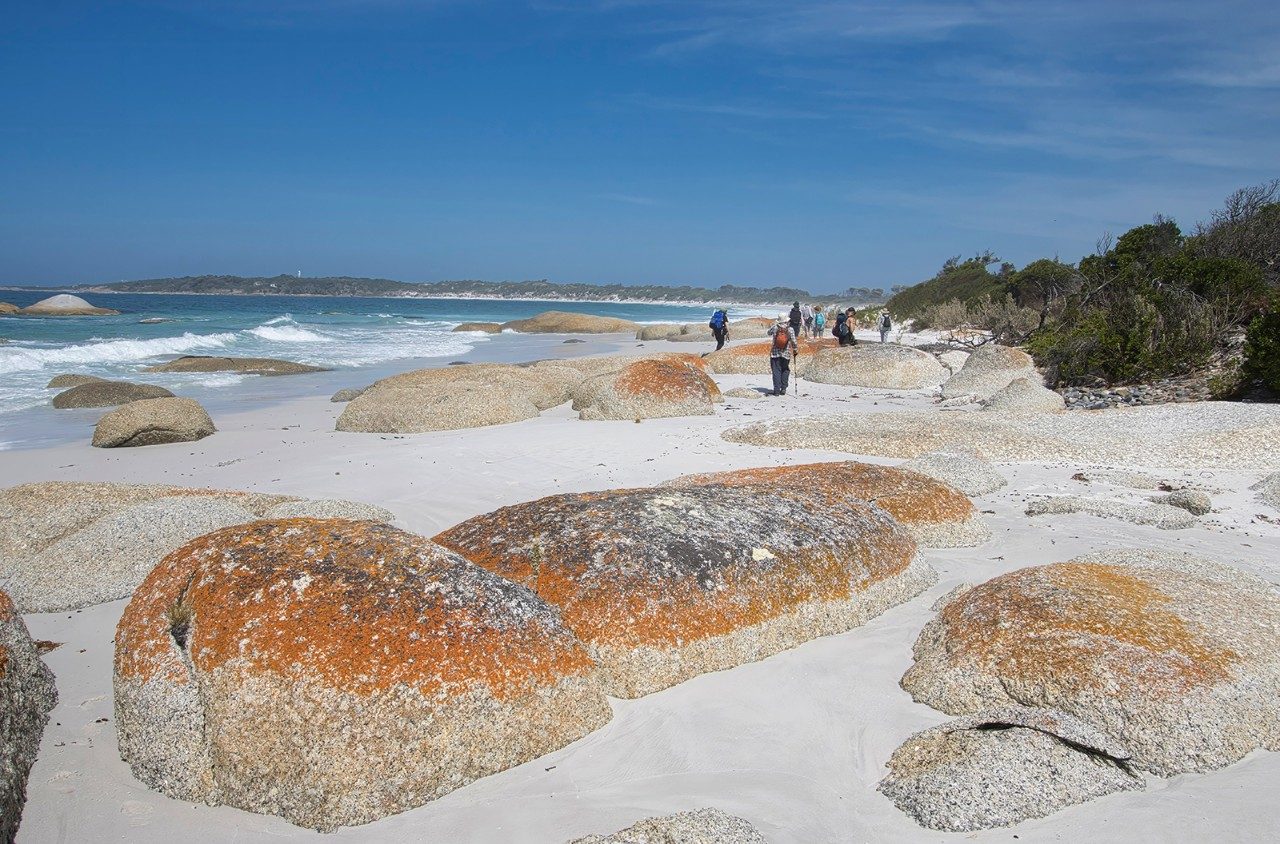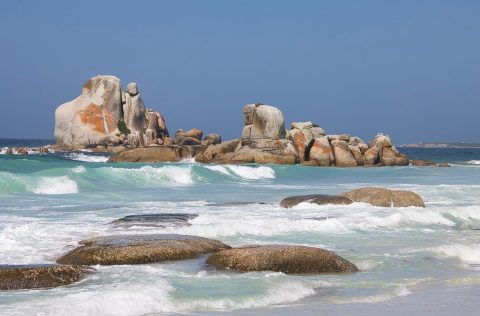Why Tasmania’s wukalina Walk is One of Australia’s Most Magical Experiences

This one-of-a-kind walk in north-east Tasmania offers immersion in the local First Nations culture.
When Clyde Mansell came up with the idea to create a First Nations-guided hike in north-eastern lutruwita/Tasmania, he had little idea of the hoops he’d have to jump through to realise his dream. It took him 15 years, multiple governments and more paperwork than you can imagine – but he was determined. “We’d had some land returned to us in 1996 and we went through the process of wondering how to best put it to use for the community,” says the Palawa Elder. “I believed that one of the best ways we could do that would be to take people out on Country and tell them our story.”

The wukalina Walk, which traces 35 kilometres along the coastline from wukalina/Mount William to larapuna/Bay of Fires, has now been operating for seven years and is celebrated for its differences. Like other hikes, it passes through stunning landscapes but wukalina’s magic is in the First Nations culture that’s threaded through every moment. Mansell has just one hope for our group of eight. “I want you to be able to say to me, ‘We have learnt something we wouldn’t have learnt unless we went on this walk.’”
We have an exceptional teacher in 25-year-old Carleeta Thomas, who grew up on truwana/Cape Barren Island and regales us with tales of a childhood spent harvesting yula (mutton birds) and making shell bracelets with her Aunties.

There’s a vividness to Thomas’s stories that brings them alive. I can see her dreadlocked ancestor, singing, clapping and swinging his roped hair so it smacks together and contributes to the percussion. She takes us back to a time when ochre was a currency and groups of women would comb the seas for fat kuparina (seals) or shimmy up gum trees to catch timita (possums). “Our culture and beliefs and practices are different from other parts of Australia,” she says. “Our mob were isolated and we had to adapt.”
On the first of the four days, we file in a single line through what Thomas dubs “wombat highway”. “This is our supermarket,” she enthuses, plucking “watermelon berries” from one tree and a bloom from the kangaroo-tail-like flower spike that pokes out of the yamina (grass tree). “This is a bush lollipop. You can drink the nectar from it.”

There’s a reverence in the way Thomas treats Country. She carries a stick and gently waves it in front of her to avoid walking into spider webs. “There’s a spiny spider,” she points out, scooping it up and placing it on a branch. Moments later, she cradles a baby blue-tongued lizard, which splays its tiny claws on her thumb. “This is like being in a David Attenborough documentary,” I quip and she grins. “Your intention and energy is really positive and Country can sense that. It’s awesome!”
I find myself following her lead, quietly observing instead of rushing past as is my usual habit. I run my fingers through the spiky needles of the yamina, crush the leaves of the kunzea and inhale its scent, pluck the buds of the bracken fern that I knew nothing of mere hours ago and pop them into my mouth (they taste exactly like walnuts, just as Thomas promised). There’s no phone to answer, no email to check, no social media to distract us. Only the rustle of the eucalypts and the sound of our footsteps.

Six hours of walking has its reward when we round a corner into the architect-designed krakani lumi (resting place). The camp is divided into two zones: the main hub, featuring a domed “living room” and fireplace (which in Palawa tradition is always kept burning), a large kitchen and amenities, and five sleeping pavilions. The pavilions, which have specially drilled holes in them for birds to nest, were inspired by Palawa shelters and the charred Tasmanian timber blends seamlessly into the environment. “We want to be situated within Country and not on Country,” says Thomas.
The camp is supremely comfortable – each pavilion has two single beds with a payathanima (wallaby) skin to ward off the chill – and the food is also a revelation. We eat everything from damper to payathanima lasagne and yula, which Thomas and her family still harvest each year. “It’s one of the cultural practices that is a direct link back to our old fellas,” she explains as she cooks over the fire, her favourite way to eat the bird, which has a fishy taste. “We take less than three per cent of the population and survey them every year to respect the birds for generations to come. We understand the life cycle of the yula.”

On day two, we walk down the beach, following in the footprints of a purinina (Tasmanian devil) and large prupilathina (wombat), to visit a living site that was once a forest. Thomas hits her clap sticks to let her ancestors know we’re entering and explains that beneath our feet are stone tools and the petrified stumps of the yamina. “This is where our people would gather and eat and yarn as one big family and one big community. We know that this living site is about 12,000 years old.”
Thomas shares a wealth of history, often mid-walk as we look out to sea and her homeland, truwana. Some of it is rich and evocative, like the Dreamtime stories of the mangana (black cockatoo) carrying fire and a mischievous girl transformed into a shooting star. Other stories are more difficult to hear, from the forced exile of Palawa to a settlement on Flinders Island in the 1800s to the atrocities of European sealers, who arrived at the end of the 18th century.

There are sombre moments but understanding the traditions and history – good and bad – gives an added richness to this walk. We’re immersed in Palawa culture, whether we’re hiking, picking the bright purple beads of the juniper tree (yes, they taste just like gin), yarning by the fire or coating our hands in ochre to leave our prints at krakani lumi. “It’s a real celebration of how beautiful Palawa culture is,” says Emily, a teacher from Hobart. “Just hearing all these things is a gift. And to do it in this setting, on Country, is amazing.”
“We have so much culture, language and different aspects of our community to share,” says Thomas. “It’s so important to bring people onto Country to give them the perspective from an Aboriginal person.”



